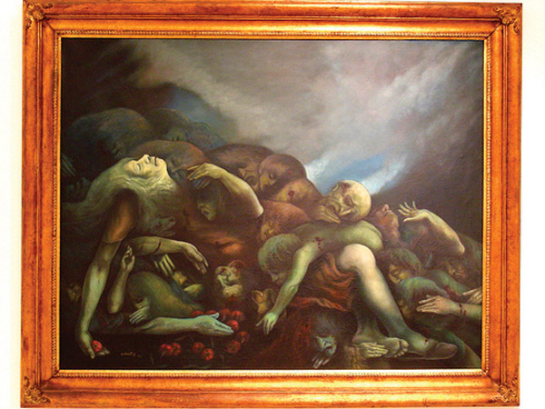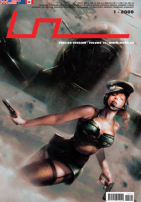| Umělec magazine 2009/1 >> Our Neighborhood Museum | List of all editions. | ||||||||||||
|
|||||||||||||
Our Neighborhood MuseumUmělec magazine 2009/101.01.2009 Franklin Moreno | museology | en cs de es |
|||||||||||||
|
When a museum, especially a fine arts museum, purports to contribute to the cultural values and identity of a society, the works of art become associated with social processes. Indeed, the social relations are what generates value and construct identities. Any single artwork can be approached in terms of either formal qualities or the social climate that compelled the artist to create the work. But an overarching aspect that constitutes the perception of the object is the institutional network or those within which it circulates. The aesthetic process of perceiving an art work, and not just the object itself, is where the role of museums should continually be examined in the world of the arts, in conjunction with other influences in the art world—the art markets or their absence. Pursuits by individuals in economic, cultural, public relations, and legal departments of a museum can coincide, diverge, overlap, as well as collide, contributing to the process of how an individual will engage with a work of art. The importance of this process is more acute when a museum attempts to exert efforts in a society grappling with violence and political and cultural relations. There are networks of museums and historical sites that attempt to address events and periods in their country’s history that continue to vex unresolved conflicts. For example, the International Coalition of Sites of Conscience, comprised of a number museums and historical sites, offers various forms of support to one another, including methodologies in fostering exhibition and dialogue programs that draw connections of the past of each respective site with their “contemporary implications.” A more traditional practice has been to align museological practices with nation-building projects, subsuming various ethnic and cultural communities into a single vision of national unity. Mexico’s National Museum of Anthropology is one of many. Distinctions should be made not only with exhibition design, but with the pedagogical practices and theoretical underpinnings that guide them. For example, the Fundación Cisneros’ Programa de Pensamiento Visual is an educational program based on a Constructivist approach to knowledge and learning, emphasizing each person’s perception of their experience in the construction of their reality. By way of this approach, the PPV is geared towards encouraging and building students’ “critical visual-thinking skills.” In contrast, traditional pedagogical practices are to “explain” the significance, leaving no room for varying perspectives. Complicating the aesthetic process within the environment of a museum occurs when the works of art become part of a system of polemic symbolic codes, such as in societies of mass trauma. Massive trauma “is more than the sum total of individual suffering because it ruptures social bonds, destroys group identities, undermines the sense of community, and entails cultural disorientation when taken-for-granted meaning become obsolete” (Robben, 2005). It’s not just how individuals relate to the world in general, but how they relate and communicate with one another, and understand those relations. Understanding is to find meaning and sense of their reality and, thus, of themselves. Now, when the objectives of a museum include to: “Contribute to the county’s educational and cultural development through the conservation and dissemination of our artistic heritage, reinforcing historical knowledge, reaffirming the cultural values that form our identity and promoting new artistic languages.”1 By using the word “aesthetics,” one does not refer to the quality of an object in itself but, rather, the process of perception becomes an expedient towards a collective outcome. In a country such as El Salvador, where the paralyzing law of “forgive and forget” continues its attempt to blanket the social and cultural conflicts that culminated into an eleven year civil war, collective terms such as “our artistic heritage” or “historical knowledge,” as well as “cultural values that form our identity” embody a contested nature. As a result, the engagement with the work of art is partly contingent on broader social factors and also how these factors are mediated through the museum. Take into consideration inaugural exhibiton of the Museo de Arte de El Salvador (MARTE), Puntos Cardinales: momentos clave del arte salvadoreños del siglo XX in 2003. Curated by Luis Croquer, the show categorized sixty-one paintings from twenty-six artists into four sections: Memory and Culture, Portraits and Figures, Reality and Fantasy, and Environment and Matter. The exhibition was mounted in the main gallery designated for Salvadoran artists. In Memory and Culture, Carlos Cañas’ 1984 depiction of a military-led massacre entitled Sumpul was displayed. In his statement, Corquer states that: “Sumpul is perhaps the most historical painting in contemporary El Salvador, since it documents a tragic event in recent history. The majority of the Salvadoran population was still unaware of the massacre at the Sumpul River that occurred in Chalatenango […] Cañas reconstructed the event in this canvas to show the murder of innocent children and elderly persons. The artist’s palette…[and]…composition… suggest a new and desolate Salvadoran landscape. Sumpul evidences the horror of war and documents events that should never again be repeated in any age or country.”2 It was an important gesture MARTE made by referencing the atrocity at Sumpul in "Memory and Culture,” but the language on the label and in the catalogue discussing the painting obscure the struggles values (cultural and social) that led to the civil war. The potential for MARTE to contribute to the historical knowledge and cultural values that inform the country’s identities in a critical manner, in this instance, fails to illustrate the complexity by eliding the causes of the horrific event. How a museum remembers—what is conveyed to the audience—affects the object to be perceived, thus the process of perception from the audience. At a time of when in 2006 President Tony Saca addressed the inauguration for the monument dedicated to Roberto D’Aubuisson, founder of the ARENA political party and known organizer of death squad networks at the end of the 1970s and throughout the 1980s in El Salvador, what implications does this have for memory and cultural values as society? Art’s role on memory, on a broad social scale depends on the systems of exposure it moves through. But this is just one aspect of the works of art and their malleability rendered by institutions and spaces they shift through. There is a great importance in examining the influence and relations museums and other institutions have on rendering aesthetic the not just the object, but of the process of perception between the individual and object. It’s not just reading the text, but how to read the text.
1 El Museo de Arte de El Salvador institutional outline, no date, 10. 2 Luis Croquer, El Salvador: Panorámica de la Pintura Siglo XX. (El Salvador: Banco Agrícola, 2004), 64.
01.01.2009
Recommended articles
|
|||||||||||||








Comments
There are currently no comments.Add new comment